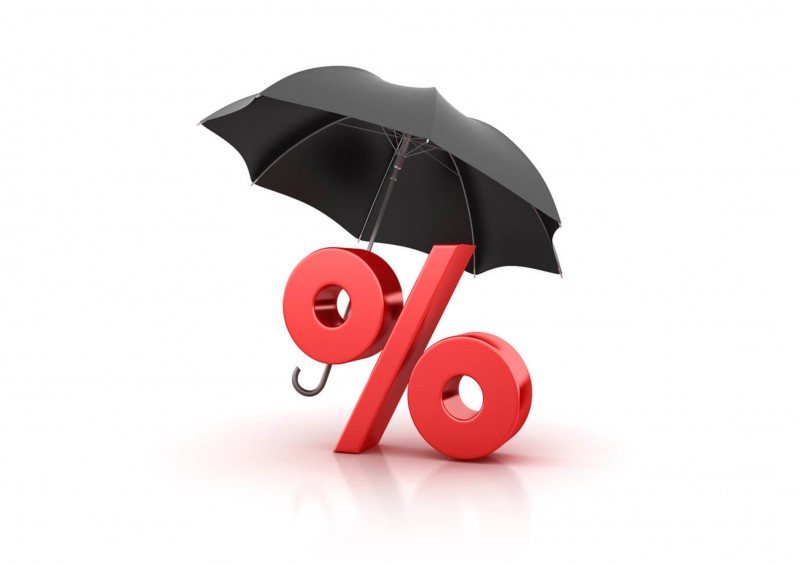Interest Rates Explained
Part One – Understanding Interest

There are two types of people who want credit – those who can casually borrow money to fund something they would like to have or do, and those who are desperate for someone to lend them money to get them out of a hole.
Interest rates are of key importance to both. For the former group, they represent spending time shopping around to get the perfect deal – lowest rates usually. For the latter group, interest rates can often be the difference between getting out of debt and falling further into it.
But what do interest rates even mean?
Interest Rates – the Maths!
Understanding percentage
Interest rates are shown as a percentage value (%), indicating the amount of money added to a loan or credit. To work out the percentage, take the original amount; divide it by 100 and then multiple by the percentage value.
Examples:
-
4% of £200 is £8
Take 200, divide by 100 (giving 2), and then multiply by 4 (percentage value). 4 multiplied by 2 equals 8.
-
7.2% of £3000 is £216
Take 3000, divide by 100 (giving 30), and then multiply by 7.2 (percentage value). 30 multiplied by 7.2 equals 216.
A basic annual rate
Most interest on a loan is listed as an annual rate. In essence, this means that if you have borrowed that £3000 from the last example, at 7.2% interest over the year - then at the end of the year (assuming you paid back nothing!) you will owe £3216 – the original £3000 plus £216 interest.
Compounding interest
Assuming nothing changes for the second year – you are still paying nothing back, and the rate of 7.2% doesn’t change, wouldn’t it be fair to assume that by the end of year two, you’d owe £3432 – the £3216 from the end of year one, plus the £216 interest?
No! You’d be wrong.
Because that second year’s interest would be calculated from the new loan balance of £3216, the actual amount of interest in year two is higher and you’d end up owing £3447.55 – over £15 more than expected.
This effect comes from compound interest – simply the interest paid on earlier interest. The amount from the end of year one gets its own interest added in year two.
7.2% of £3216 is, in fact, £231.55. That’s £15.55 more than the interest from year one!
So if the loan isn’t paid back, it’s going to grow and grow… Untouched, in year three it would accrue £248.22 (just short of another £17 on top), and in year four, £266.10 (approximately another £18).
Monthly interest calculations
This is where it gets a little confusing!
Working out the monthly interest rate is as simple as taking the basic annual rate and dividing it by 12. The 7.2% rate from the example would be a monthly rate of 0.6%.
However, most loans and credit cards take compound interest into account, so that simple calculation isn’t enough. In fact, a monthly compound interest rate of 0.6% would result in a real yearly interest rate of 7.44%. On a £3000 loan, that’s an extra £6.60 interest paid in the first year!
In order to produce the correct yearly figures, while calculating interest monthly, credit card companies and banks use rather more complex calculations. An interest rate of 7.2% yearly is a monthly compound interest rate of 0.581%!
Phew!
The reality is, that with a 7.2% annual interest rate on a loan, calculated as compounded monthly interest, the rate is much better expressed as a monthly interest rate of 0.581%. Those figures, however, are confusing to look at and confusing your customers is never a good idea - the companies avoid it. Breaking it down like that, however, does give us the ability to look properly at the interest for our example.
Loan repayments and interest
Of course, hopefully loans are constantly being paid off and not just sitting there for years accruing interest!
Let’s take a look at the first year of our £3000 loan at 7.2% annual interest, calculated as compound monthly interest of 0.581%, paid off at £100 per month:
|
Month |
Start £ |
Interest % |
Total owed £ |
£100 Paid |
|
January |
3000 |
17.43 |
3017.43 |
2917.43 |
|
February |
2917.43 |
16.95 |
2934.38 |
2834.38 |
|
March |
2834.38 |
16.47 |
2850.85 |
2750.85 |
|
April |
2750.85 |
15.98 |
2766.83 |
2666.83 |
|
May |
2666.83 |
15.49 |
2682.32 |
2582.32 |
|
June |
2582.32 |
15.00 |
2597.32 |
2497.32 |
|
July |
2497.32 |
14.51 |
2511.83 |
2411.83 |
|
August |
2411.83 |
14.01 |
2425.84 |
2325.84 |
|
September |
2325.84 |
13.51 |
2339.35 |
2239.35 |
|
October |
2239.35 |
13.01 |
2252.36 |
2152.36 |
|
November |
2152.36 |
12.51 |
2164.87 |
2064.87 |
|
December |
2064.87 |
12.00 |
2076.87 |
1976.87 |
So over the year, having paid 12 payments of £100, the loan has dropped just over £1000 and the total paid in interest was £176.87.
7.2% of £3000 is £216, so in this example, the fact that interest was calculated monthly has had a positive effect, saving almost £30 in interest as the size of the outstanding balance dropped monthly.
Taking Time to Digest
There’s more on interest rates than can be squeezed into a single article. Head over to part two for more.
